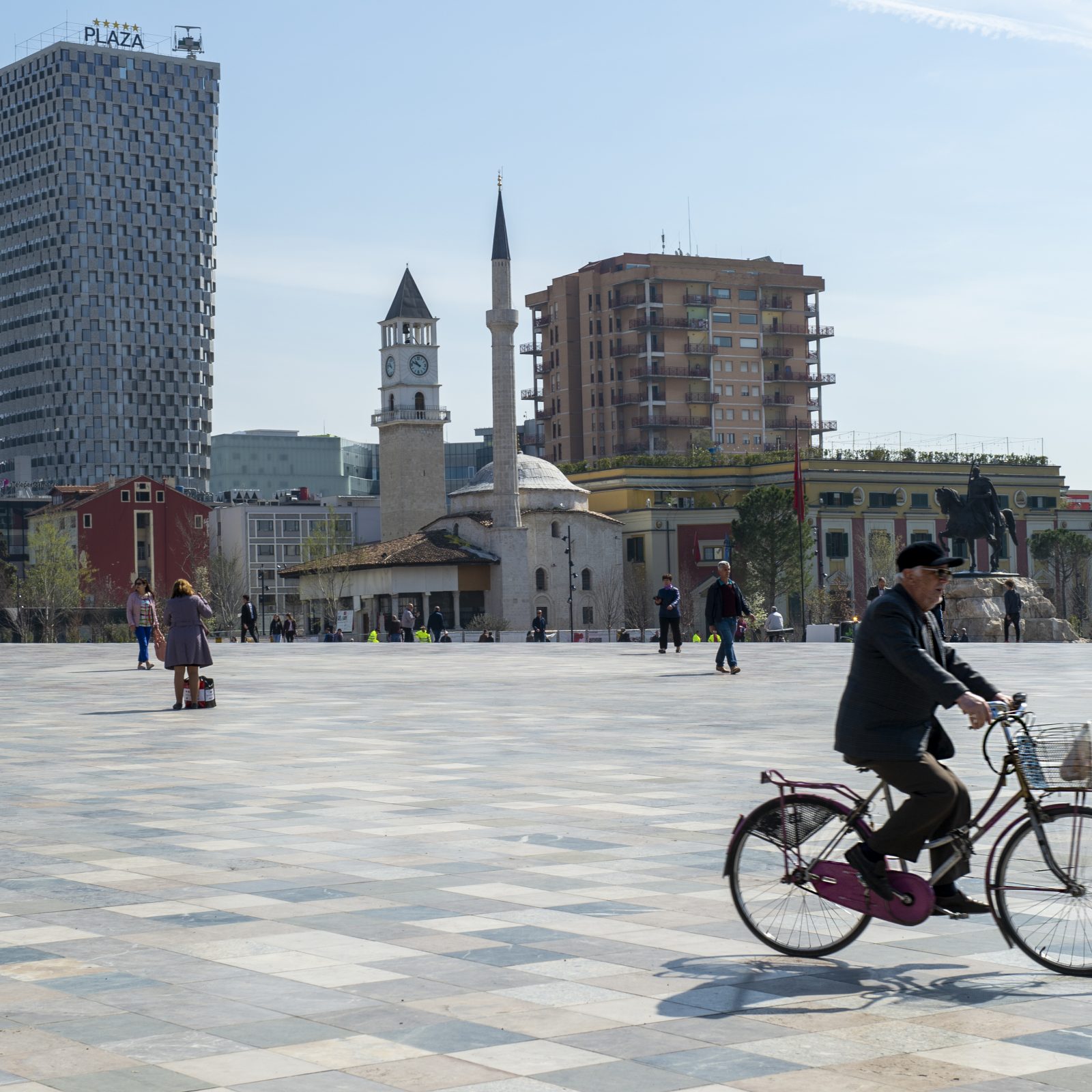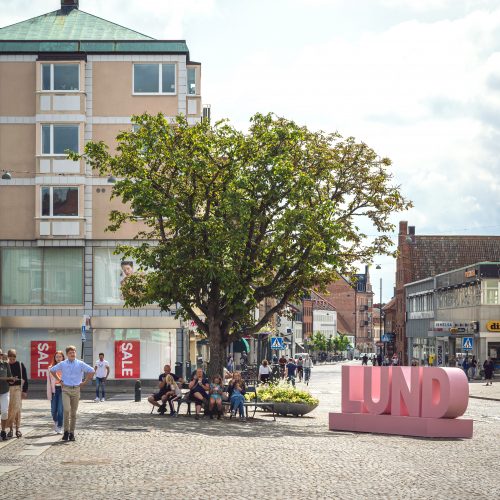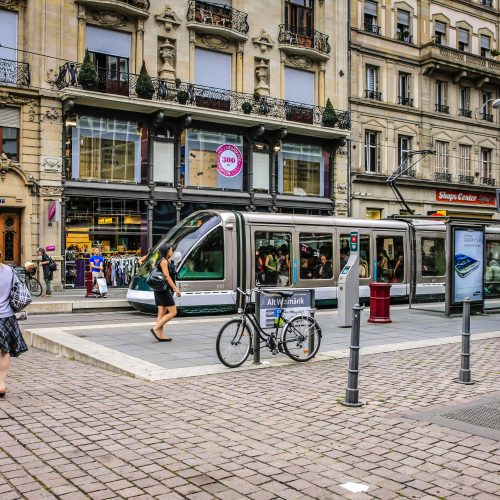Description
Cycling generates no emissions or noise, requires less road and parking space compared to cars and is a more economical and healthier form of mobility, compared to motorised transport.[1] Cycling improves the mobility of people who have limited access to other private transport methods (such as cars) due to financial reasons. It also helps reduce health risks (such as obesity and cardiovascular disease) and enhance mental wellbeing. Policies to encourage cycling include pro-cycling infrastructure, pro-cycling regulation and pro-cycling subsidies. A modal shift to cycling can be further promoted by awareness and attitude campaigns.
Pro-cycling infrastructure includes the introduction of segregated cycle lanes and the introduction of convenient and theft-preventing parking facilities as well as bike-sharing facilities. Pro-cycling regulation can be seen as an effort to modify road use and traffic patterns in favour of cycling, for example, introducing two-way cycling in one-way streets or introducing advanced-stop boxes in front of cars at traffic lights. Such regulation can also include work towards a reduction or calming of traffic.
Pro-cycling subsidies may fall primarily within the sphere of national policies. However, municipal fiscal measures may include local tax benefits to install cycle-friendly infrastructure, such as bicycle parking at work. Local governments can also demonstrate their support for cycling through cycle-friendly public procurement procedures, which may include purchasing electric bicycles or electric cargo bikes instead of light commercial vehicles for services such as postal deliveries.

Resource implications and key requirements
The design and construction of segregated cycle lanes may be costly, but moderate alterations to existing road infrastructure, such as painted lanes on the side of roads, are more affordable for a city budget. A different issue arises from the potential need to reallocate scarce urban road space to safe cycling infrastructure by removing on-street car parking facilities or by introducing one-way streets. From 2010-14, the city of Copenhagen allocated €80 million to the implementation of its bicycle strategy. The cycling infrastructure in Copenhagen is extensive and includes a network of segregated bike paths, bicycle traffic lights, separated coloured bike paths where cars and bikes share road space, and bicycle parking.
Cycling infrastructure should be accessible, safe and comfortable for every user, which is essential for attracting more cyclists. This may require additional design and construction efforts. For example, access to dropped kerbs needs to be wide enough so that disabled cyclists can use them. Furthermore, measures need to be taken to ensure cycle lanes have minimised ramp gradients and are free of hazards such as potholes. Sufficient dedicated disabled cycle parking and storage facilities are another critical component of inclusive cycling infrastructure.
Pro-cycling policies can be administratively demanding due to the need to create a cycling code and implement new regulations for non-road infrastructure provision, such as bicycle parking. Policy measures that involve re-regulation of traffic patterns can also be technically demanding and may necessitate new capacities within the local administration. Bike sharing is not cheap, but with good sponsorship arrangements, it can represent a minimal burden for the city budget.

Potential private-sector participation
The private sector is involved through the provision and sponsorship of bike-sharing schemes and companies may be further involved in providing bicycle parking facilities and cycling incentives as part of their human resources policies or remuneration policies. Non-governmental organisations (NGOs) can also play an essential role in rolling out cycling initiatives, such as bike-sharing schemes. Bike manufacturers, retailers and service providers are instrumental in promoting inclusive cycling products, facilities and services. Financial and/or non-financial support can be provided to the companies that are involved in such businesses.
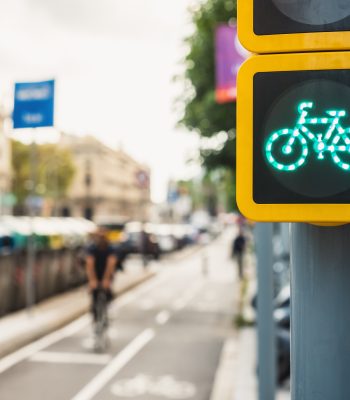
Implementation obstacles and solutions
Reallocation of scarce urban road space away from cars and buses will naturally meet resistance and compromises will have to be made. As in many policy options, a gradual introduction of pilot cases, combined with clear communication and ideas for the city-wide and global benefits of a shift towards active mobility must make up a core part of a pro cycling strategy. This can include supporting cycling organisations, working with stakeholders, and developing marketing and education programmes – in which NGOs can also play a role.
In many cities, bicycle theft is a growing problem and should be addressed through supportive measures. An important aspect of reducing bicycle theft is to involve multiple actors. Municipalities should make safe parking spaces available and launch campaigns to inform bicycle owners about locks, as well as introduce registration systems for bicycles or more advanced systems, such as chips.
To ensure that all groups of society benefit from pro-cycling policies, bespoke promotional activities and communication measures can be implemented to raise awareness among target groups of the benefits of cycling and the fact that cycling can be for everyone. It is also useful to provide training programmes that teach cycling skills and traffic regulations. For 25 years, the Centre for Immigrant Women in Tilburg, Netherlands, has offered cycling courses for immigrant women. Each course contains 10 lessons for one hour a week in a group of 10 to 12 participants. The local administration mainly funds the programme, and it is aimed at building up participants’ confidence and independence for cycling.[2]
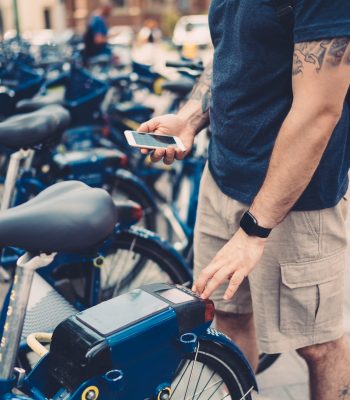
References
[1] CIVITAS (2009), “Smart choices for cities: Cycling in the City”, CIVITAS WIKI Policy Analysis Series.
[2] ISOE (2020), “Handbook on cycling inclusive planning and promotion”.








